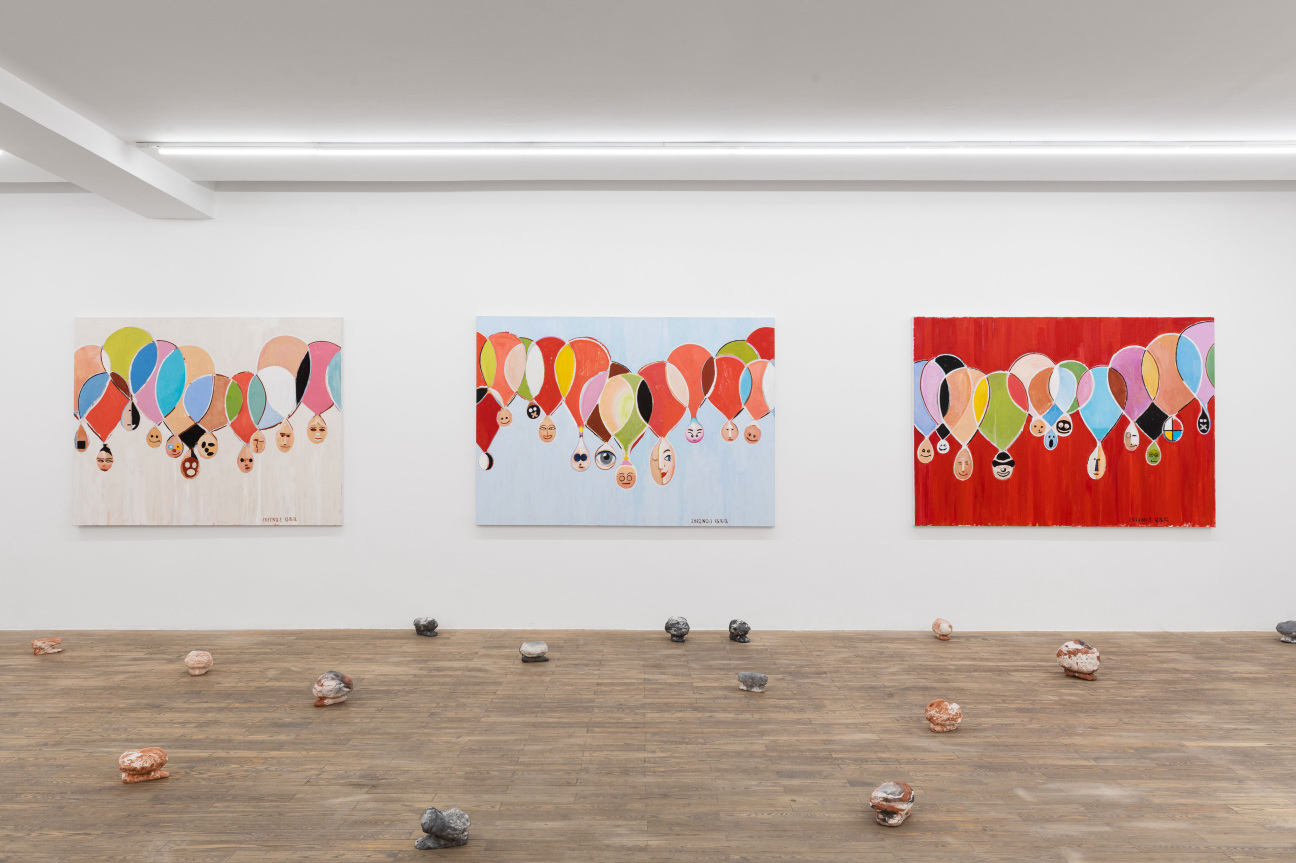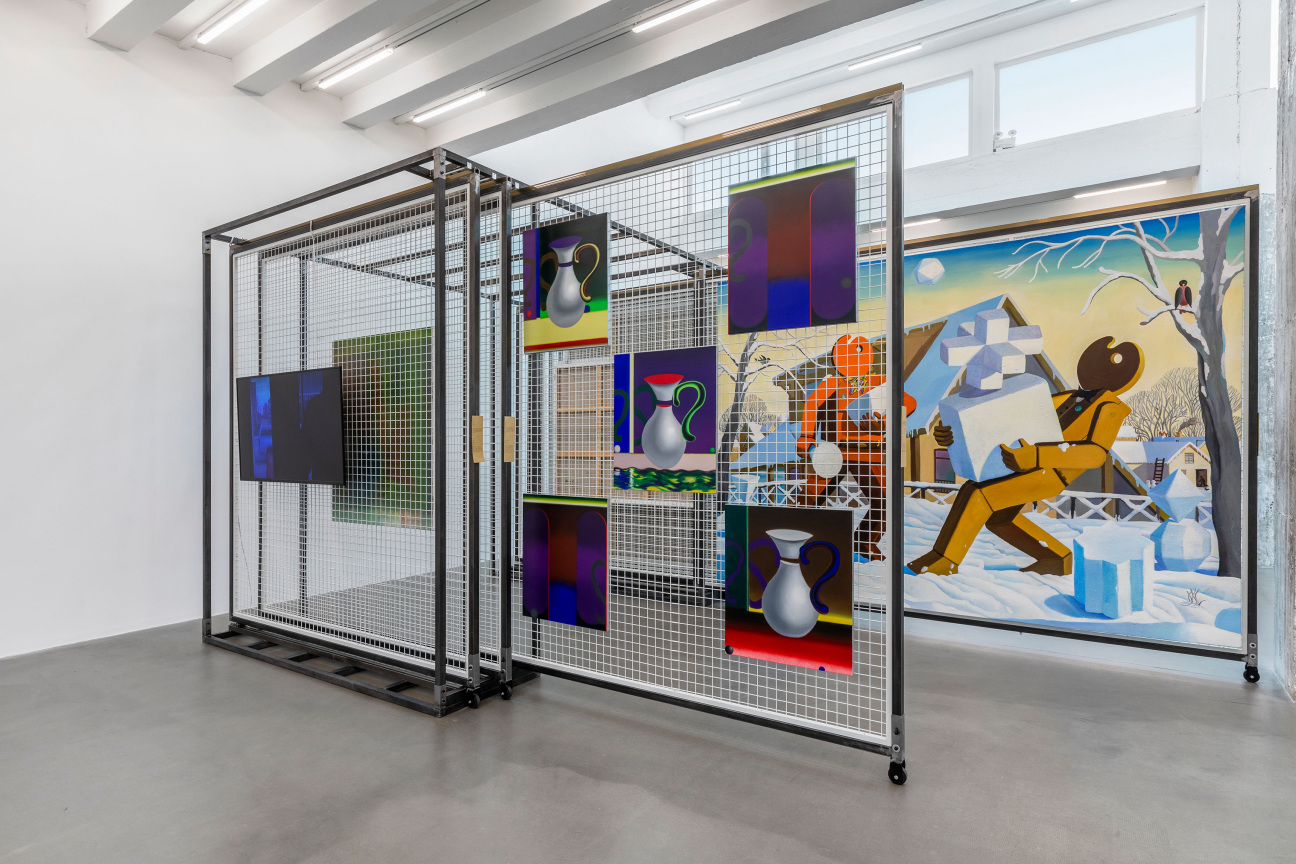As the 2022 Gallery Weekend Beijing opened its doors to VIPs today, the edition’s “Sharing” theme took on several poignancies. As the first major physical cultural affair in China since the beginning of the pandemic, the more than 30 galleries and nonprofit exhibitors were aligned in their mission to present the best of Chinese contemporary art on a global platform. But it is also an opportunity to share the goings-on of the art ecosystem within China with local visitors on a large scale again. This year, director Amber Wang reveals below, the institution is working with nonprofits for the first time and has brought together four young curators from Chinese art museums to stage its special exhibition, sharing both resources and the worldwide platform on which conversation is sparked. Though the digital is still present—Gallery Weekend Beijing created an AR map to locate exhibitors on the ground or from the comfort of home as well as offers the ever-persistent online viewing room—the thrill of the in-person experience is back after a few years behind screens.

Cultured Magazine: Why does this feel like such an exciting edition for Gallery Weekend Beijing?
Amber Wang: This year marks the sixth edition of Gallery Weekend Beijing. We have grown from 18 participating galleries and institutions in 2017 to over 30 exhibitors with more than 40 exhibitions in 2022! It’s worth mentioning that last year, GWBJ attracted over 199,000 physical visitors, which helped solidify our platform as a major fixture in the global art calendar.
CM: What’s special about this year’s event?
AW: Under the impact of Covid-19, Gallery Weekend Beijing will be the first major physical contemporary art event in Mainland China to be staged this year.
Our previous postponement—from May to June—has allowed us to work more closely than ever with our exhibitors and partners, in which GWBJ 2022’s overarching theme of “sharing” has taken on a whole new significance during this difficult time period. In the process of active preparations, we felt a great responsibility. We hope this year’s event can reflect and strengthen the city’s diverse and dynamic art ecosystem and inject a new level of confidence into the contemporary art industry in China. GWBJ positions itself as a platform, not only in Beijing but partner with outstanding galleries, institutions, artists and the public from different regions, bringing contemporary art into urban space and building sustainable art ecosystem.

CM: What are you most looking forward to at this edition?
The most exciting exhibition that I look forward to is our Main Sector Special Exhibition “Crosstalk.” It is staged on the first floor of the 798 Art Center that is tightly curated around the theme of “Sharing,” meaning cohesion, breaking boundaries and communication. We invited four young curators from Beijing Inside-Out Art Museum and UCCA Center for Contemporary Art to curate the exhibition, which also marks our first time collaborating with nonprofit institutions on staging a show together. The artists featured in the exhibition are at different stages of their careers, and the works are from different periods of their creation, including some lesser-known creative practices. The exhibition intends to reconstruct new coordinates, explore more possibilities of the works under the framework of multiple narratives and hence inspire the audience.
Our Main Sector participating institutions and galleries are also presenting exhibitions that showcase Beijing’s unique art ecosystem and contemporary cultural landscape. We also see a new energy and contextual diversity brought by the galleries from the Visiting Sector, which includes international galleries debuting at GWBJ. Since the onset of the pandemic, we have seen a big decrease of international communication, and inter-regional linkage has become more difficult, but we still try our best to get connected with the global art scene. This year’s Visiting Sector enlists a strong lineup of seven international galleries including Pilar Corrias, Galerie Chantal Crousel, Gladstone Gallery, Balice Hertling, Kiang Malingue, Almine Rech and Timothy Taylor.

CM: How have you seen the gallery landscape in Beijing change since the first edition?
AW: Beijing is home to many grassroot galleries and eminent contemporary Chinese artists. The city has a very rich history both in ancient and contemporary art, and many established collectors increasing over the years. We wanted to fully tap the potential of this city and reunite institutions and galleries to strengthen our art scene. While the “Gallery Weekend” model is widespread around the world but how do we apply this model to China, especially in Beijing? We learned from others to gain an international perspective, but more importantly, we must base on our local environment and conceive a new approach to attract a bigger audience base. There is a vibrant, emerging and dynamic art landscape, with immense opportunity for growth.
Against the backdrop of the pandemic, the convivial and collaborative spirit in Beijing’s contemporary art industry has paved the way for new galleries and museums to proliferate in Beijing. For example, the opening ceremony of our participant CHOI CENTRE and its inaugural exhibition "ReBirth – Encountering Nature" were successfully held on April 25. Additionally, art galleries in Beijing have also maintained their exhibition programs and presented exciting new projects. Under these current circumstances, all galleries and nonprofit institutions have shown amazing resilience and determination to maintain the healthy art landscape, and we are so grateful to see this.

CM: How do you hope to see the art world in Beijing change in the next five years?
AW: Our vision is to build a forward-thinking, professional, international platform that is conducive for dialogues on contemporary art. GWBJ has been actively working with an Academic Committee and undertakes a rigorous selection process to ensure we are presenting the most innovative exhibitions every year. Also, we want to strengthen the local landscape that would help connect Beijing with the international art scene. We have been keen in engaging with galleries outside Beijing—both across China and around the world—to expand the global reach of the platform and include more diverse voices, program of artists who affect the course of contemporary culture and challenge established forms of creative expression. In a nutshell, we hope to cement the strength of Beijing’s contemporary art scene and its position in the global art calendar.










 in your life?
in your life?

